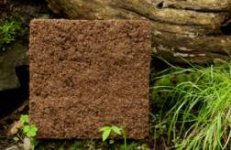GeckoGirl1990
New member
Ok so, most of us have witnessed (or been a part of) fiery discussions about which substrate is the correct substrate for different species. The back and forth between natural looking, and safe looking, or others.... I personally am on the fence in this debate, changing my mind often. But I think I found something that could solve this problem for some species! (i think) :idea:
Theyre called coco tiles. While they're intended to be background tiles, I think they'd be great as cage flooring (and more comfy than tile!). I'm not sure if im allowed to say what website I found these for sale on, but I can quote the description:
Neo Terra Coco Tiles - $ 3.99
6”x6”x 1” average
Are you looking for an all natural good looking background material made from “green” sustainable materials? When adhered to the back and side walls of your terrarium these tiles provide a soft, absorbent, earthlike background approximately one inch thick. While providing a great home for plants they also add an insulating layer. As they are not an open web they do not offer hiding spots for insects or the possibility of a stuck frog. Made from all natural materials harvested in an ecologically responsible and sustainable manner.
Too good to be true? let me know what you guys think :feedback:
Theyre called coco tiles. While they're intended to be background tiles, I think they'd be great as cage flooring (and more comfy than tile!). I'm not sure if im allowed to say what website I found these for sale on, but I can quote the description:
Neo Terra Coco Tiles - $ 3.99
6”x6”x 1” average
Are you looking for an all natural good looking background material made from “green” sustainable materials? When adhered to the back and side walls of your terrarium these tiles provide a soft, absorbent, earthlike background approximately one inch thick. While providing a great home for plants they also add an insulating layer. As they are not an open web they do not offer hiding spots for insects or the possibility of a stuck frog. Made from all natural materials harvested in an ecologically responsible and sustainable manner.
Too good to be true? let me know what you guys think :feedback:


